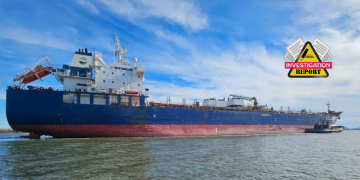The Australian Maritime Safety Authority (AMSA) has released its National Compliance Plan (NCP) for the 2024-25 financial year, with inspection efforts a key focus area due to an increase in deficiency and detention rates.
AMSA’s Acting Executive Director of Operations, Chris Barber, explained that port state control ship inspection data had shown an increase in both deficiency and detention rates from 2022 to 2023, prompting a focus on higher-risk vessels for inspection efforts. He stated that there was room for improvement and emphasized that sub-standard shipping would not be tolerated.
Barber explained that the NCP further detailed key focus areas for compliance activities relevant to domestic commercial vessels (DCVs) and the marine environment, highlighting a focus on changes to safety management system provisions, including simpler requirements for smaller vessels, which better reflect the risk profile of these operations. This would cover issues such as fatigue management, dangerous goods, and emergency plans to minimize the risk of injury to crew and passengers. He noted that data suggested a continued compliance focus on lifejacket wear and risk assessment requirements was necessary.
Chris Barber mentioned that both emerging and ongoing issues would be addressed to improve maritime safety and environmental outcomes. In undertaking their statutory role, it was indicated that compliance activities would be ensured to be risk-based, streamlined, and proportionate to the risks being managed.
A systems-safety approach would be applied to understand and address safety issues by considering all factors contributing to an incident, examining broader factors including onboard conditions, environmental influences, organizational constraints, and other safety factors.
By using a data-driven approach AMSA aims to ensure greater consistency in the collection, categorisation, and analysis of safety data. According to AMSA, it will help to inform more effective, and integrated prevention activities to address safety issues of concern.
This approach involves:
- Undertaking compliance assessments based on relevant information and intelligence analysis.
- Identifying current and emerging compliance risks.
- Developing innovative and targeted strategies to effectively address safety and compliance priorities.
- Implementing targeted strategies using a planned approach with clear goals and using the full range of tools available.





























































